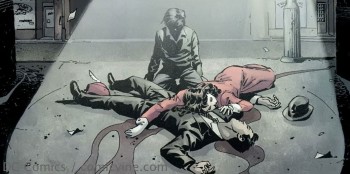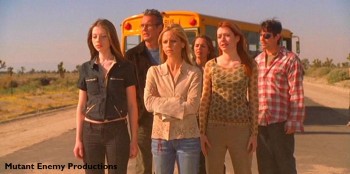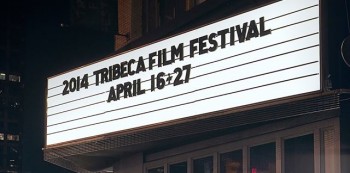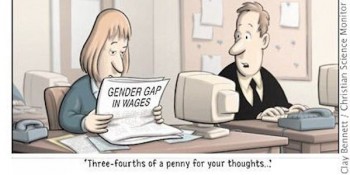Is art limited to paintings? Is literature limited to books? Can a comic book or a graphic novel be considered both art and literature? Or are they the medium of choice for the classless and the ignorant?
People often have one medium they most enjoy. For some, it’s a book; for others, it’s a movie or live-action television. Comic books and graphic novels are nothing more than another medium. These are media with dedicated writers and artists equally as capable — or incapable — in their areas as anyone who works in television, cinema, or the printed word is in those fields. Then why is there such a stigma when an adult expresses enjoyment for comics?
Comic books and graphic novels as literature
The comic book is derived from the most basic form of storytelling, yet it can tell stories as complicated as any other medium can. The word “comic” emerged from the comedic subject matter that was originally prevalent in the serials. The content has evolved over the years to become a format primarily dedicated to the superhero, but the name has never changed. The term “graphic novel” may fit the more disparate focuses of the modern comic, but it only applies to longer story arcs, not the 30-page serial fiction released every month by DC Comics and Marvel.
If you define the comic book and the graphic novel as sequential pictures that tell a story, you see that the medium is open to much more than just superheroes. Last year, Rep. John Lewis released a graphic novel, March, recounting the story of the Civil Rights movement from his own experience. The novel utilizes photorealistic art to recreate the story of Martin Luther King and the Civil Rights crusaders in a way that can appeal to younger readers without the costs of a feature film.
“It’s another way for somebody to understand what it was like and what we tried to do,” Lewis told the Washington Post. “And I want young children to feel it. Almost taste it. To make it real. … It’s not just the words but the action and the drama and the movement that bring it alive.”
In fact, it was a comic book that inspired Lewis to join the fight for Civil Rights. Martin Luther King and the Montgomery Story was published in 1957 as a way to tell the story of the movement in a unique way. It worked, giving us a long-serving Civil Rights icon and contributing to the overall cause.
March and The Montgomery Story are not the only serious comic books out there. For some, the horrors of the Holocaust first became real thanks to the works of Art Spiegelman. Printed in 1991, Maus informs the reader about the 20th century’s greatest atrocity in an unprecedented way. Using mice to represent the Jewish people and portraying Nazis as cats allows the reader to continue reading through the brutality without flinching while still bringing attention to the horrible actions of the Third Reich.
Serious subject matter makes for some powerful stories, but the comic book also allows writers to create some of the most fantastic tales ever told. An empty page offers unlimited creative potential that the right artists and writers can bring to life. Again, superhero tales are the backbone of the comic book oeuvre, but the medium has produced many more stories that would be difficult or impossible to tell in any other format.
Neil Gaiman’s The Sandman is the story of Morpheus, one of the seven Endless, as he tries to rebuild his kingdom after being held prisoner for 70 years. The story is one-of-a-kind and intelligent and is still talked about among fans of the medium nearly 20 years after its original run. The series is so singular that Hollywood has been unsuccessful in its attempts to adapt it to the big screen for two decades — though they are still trying, with Joseph Gordon-Levitt recently signing on to work on the adaptation for Warner Brothers.
Saga is an ongoing comic book serial that is unafraid to take remarkable risks, creating imaginative worlds hosting very realistic characters. Alien creatures, ghosts, and soldiers with television monitors for heads are all commonplace in this story of star-crossed lovers. The bizarre originality and vast universe created by Brian K. Vaughan and Fiona Staples could not make it onto film or be told appropriately in a novel, but comes to life with only paper and ink.
Comic books and graphic novels as art
It is easy to ignore the amazing artists who give these characters form. Stan Lee is a rock star and a god to fans of superheroes. Yet, while he has a genius creative mind, Lee still needed the steady hands of Jack Kirby and Steve Ditko to create his most famous heroes. After all, it’s the art that differentiates the medium from text-based books.
There is no single comic book style of art either. Often, the artist chooses what look is best for the project at hand and illustrates accordingly. March uses a stark, realistic tone to recreate the world we know in a powerful new way, rendered beautifully by Nate Powell. When drawing Watchmen and V for Vendetta, Dave Gibbons, David Lloyd, and others also opted for an ultra-realistic style of art to create a world painfully similar to our own, allowing them to drive home Alan Moore’s themes of real tragedy and pain.
The tact is different when illustrating for a Superman or Green Lantern comic. These heroes are larger than life and are often illustrated as such. Many Lantern stories, especially those drawn by artists such as Jim Lee or Ivan Reis, are spectacles of chaos and wonder that match any summer blockbuster movie. In contrast, the more psychological books, such as Arkham Asylum or Gaiman’s Sandman, are often drawn in a distorted way, more closely resembling an acid trip that anything perceivable in the real world.
Is a full-page spread of galactic warfare or a somber panel showing a young boy reacting to the murder of his parents any less valuable as art than the works of modern painters? Certainly, the inferiority associated with comic book artists has faded within the profession in recent years, but quizzical looks still follow whenever a consumer asserts the artistic capacity of a comic book illustrator.
In the past several decades, comic book stories have become the basis of many Hollywood movies. As a result, the source medium has become popular again in its own right. But a stigma still exists. It is still commonplace that a person enjoys The Dark Knight or V for Vendetta movies and yet asserts that comics are for kids.
That idea is no longer valid. Comic books and graphic novels are just a medium. They can be for kids or adults, can tell stories of superheroes like Spider-Man, or real heroes like John Lewis. The only thing holding you back from enjoying a comic book is finding the one that is right for you.









